In an NCAA conference week plagued by a flood of relay DQs, photographs of ACC relay exchanges add support to the theory that step-over starts are causing legal relay starts to take DQs from official timing systems.
What are Step-Over Starts And How Could They Cause False Positives?
SwimSwam’s own Mitch Bowmile wrote at length on the issue yesterday, and you can read his piece here. The crux of the idea is that a rash of false start DQs could be caused by the rising popularity of step-over starts. As swimming has legalized and normalized the presence of starting wedges on starting blocks, swimmers have incorporated them more and more into their races. The latest development to really take hold in a wide-spread way is to use the wedge for relay starts, beginning with one foot on the wedge and one foot behind it, then stepping over the wedge and placing the foot at the very front of the block while launching oneself into the water.
The theorized issue with this start is that swimmers aren’t tripping the official “Relay Judging Platforms” or RJPs. An RJP sits on top of the block and records a swimmers feet touching the top surface of the block. RJPs are used in connection with touchpads to record relay exchange times – the system records a touch on the touchpad and also records when the swimmer’s feet leave the RJP. The time in between is the relay reaction time. 0.07 seconds would be a great relay exchange; -0.07 seconds would be a recorded false start.
But if the RJP can’t track the swimmer’s feet on the block – for instance, if a swimmer starts with their weight behind and/or on top of the wedge, and if the front foot plants so far at the front of the block that it doesn’t on the RJP – then the relay exchange system would be thrown off. That, some coaches, swimmers and fans say, could be causing “false positives,” or relay exchanges that are perfectly legal but that record as false starts on the timing system.
Relay Start Gallery
With that long-winded explanation out of the way, here’s a look at two relay exchanges from the Women’s ACC Championships. Swim parent Rick Jones took screenshots of meet video, and when viewed together, they serve as almost a slow-motion video of each relay exchange.
The first exchange is from Duke’s 200 Medley Relay. Butterflyer Alyssa Marsh swims in for freesytler Maddie Rusch and the system officially records the reaction time as -0.07 – technically an illegal false start. But the photographic evidence does show Rusch using a step-over start. You can be the judge of whether the illegal reaction time appears correct or not. The Duke relay was not DQ’d, as no relay can be DQ’d on a recorded reaction time alone – an official must also call the false start for an official DQ to be made.
The second exchange is from Virginia’s 200 Medley Relay. Butterflyer Ellen Thomas swims in for freestyler Caitlin Cooper. The system once again records an illegal -0.08 reaction time. Virginia was officially DQ’d for a false start. The DQ is significant because the loss of 54 points (what UVA would have gotten for third place) could impact the team points race, where UVA currently trails NC State by just 26.5 with one day remaining.
Each relay exchange is posted as a gallery below. You can see a sort of slow-motion video by using the arrows to flow through the gallery. You can also see the original photos on Rick Jones’ Facebook page, where they are also sorted into galleries. Thanks to Rick for taking the screenshots and providing them to SwimSwam.
Duke Relay Exchange
Duke is in lane 7, second from the bottom, marked by the yellow arrow.
Reaction time was recorded as -0.07.
Virginia Relay Exchange
Virginia is in lane 4, fourth from the top, marked by the yellow arrow.
The recorded reaction time was -0.08.

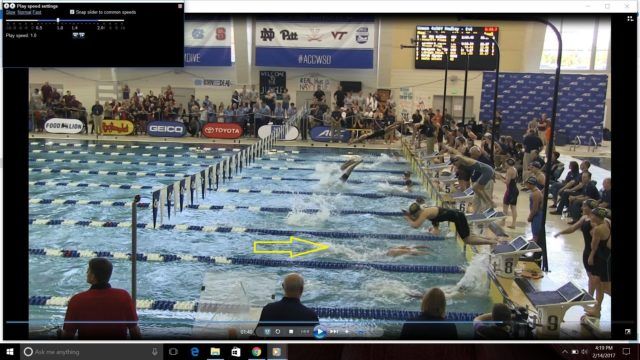



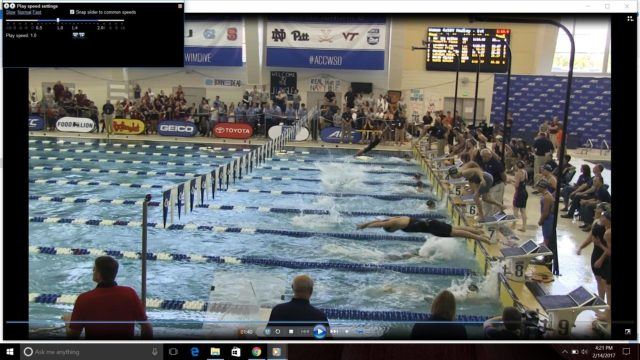


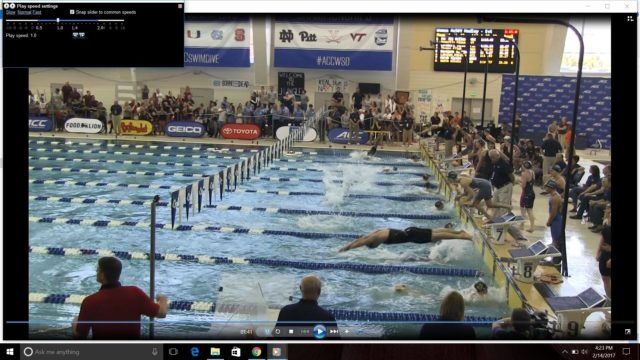



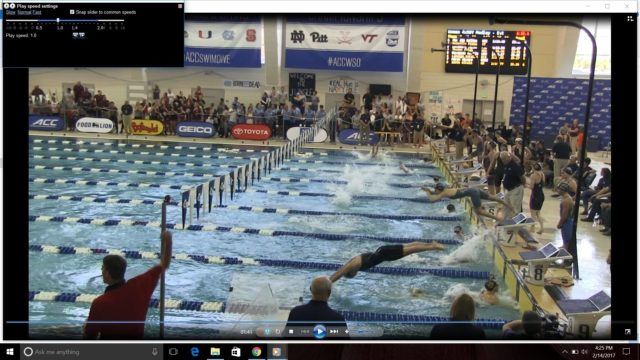
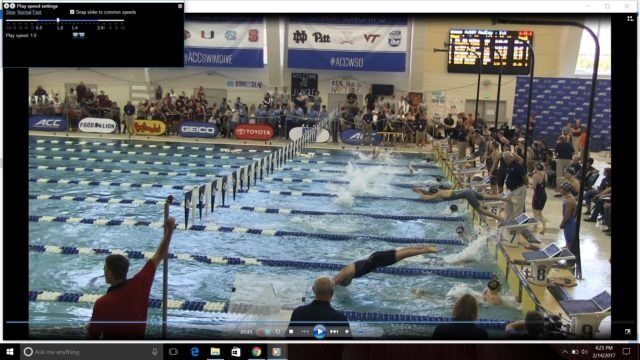

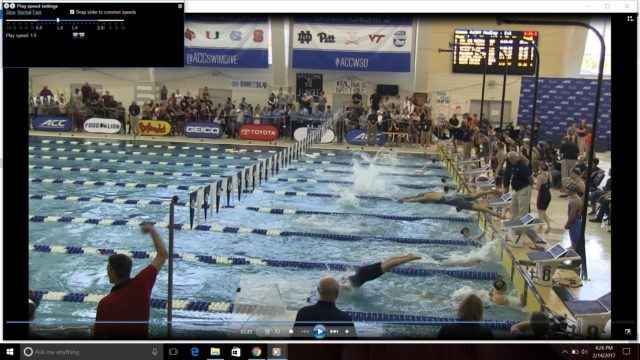



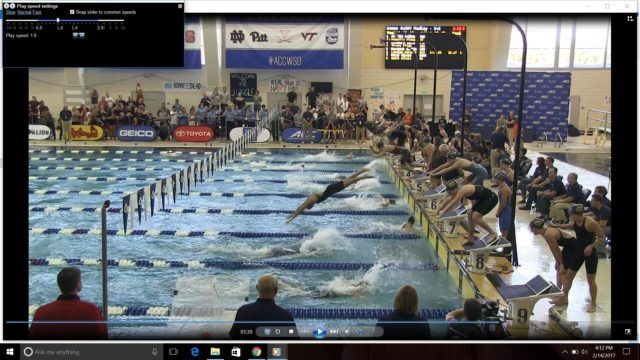

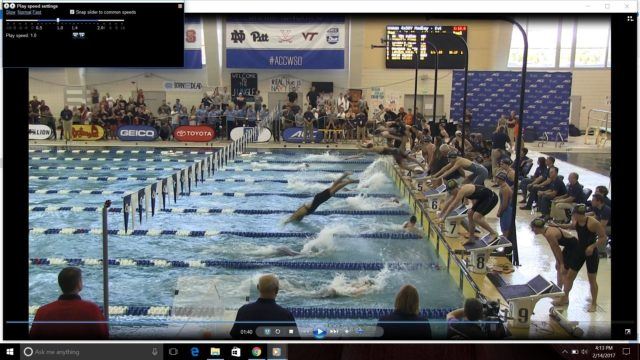
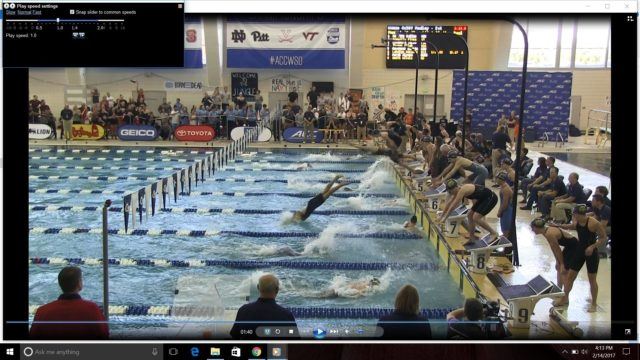
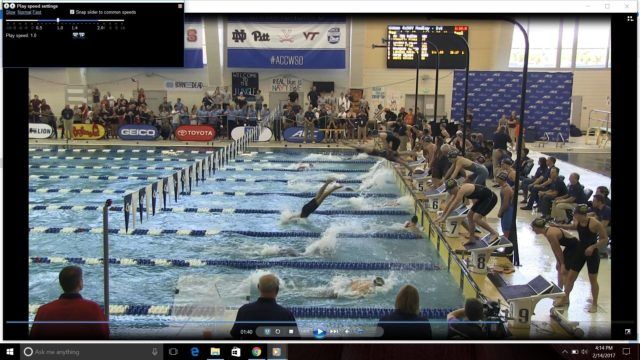



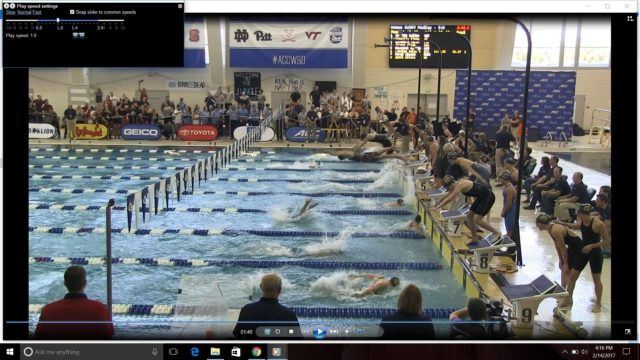
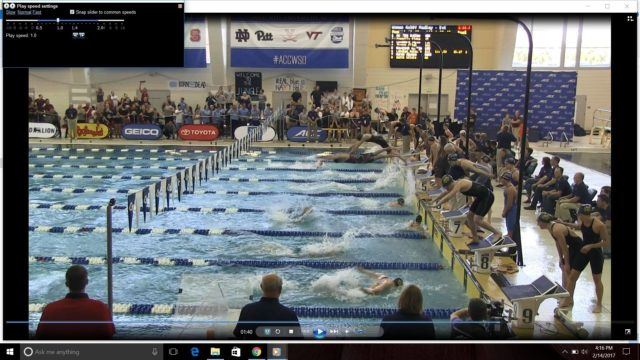


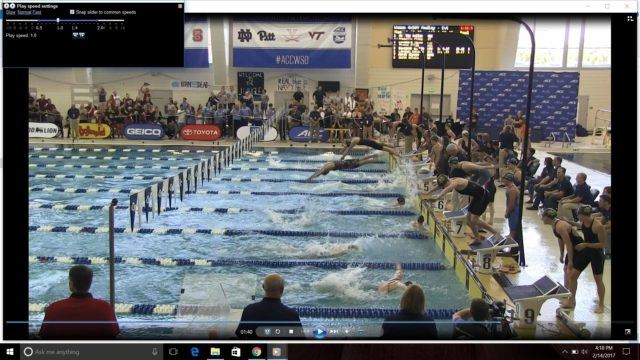
D1 Nats are not the only place this is happening. Take a look at D3’s numbers. The explanation from the Head Ref was the same in every instance it seemed, “officials called it, video was reviewed, your swimmer jumped (specific number given)”. and then we were summarily dismissed. I understand that by showing the coach the video you hold up the meet, I understand they are working very hard to get this right. Maybe after the end of the session they can open up video review to those coaches that want to see the call. I think if you are opening up the video review to the coaches at the end of the session, you are showing the coaches that… Read more »
-0.07 exchange does not require a human confirmation in NCAA rules. It should be an automatic DQ. Remember also that a proper exchange time recording requires a good finish (touchpad) as well as departure (RJP). If the pad finish is slow, it will record an early take-off.
Good reporting on this topic should also include manufacturer of the RJP. Technologies used by Colorado, Omega, and Daktronics are not the same, and should not be confused.
The solution seems easy: no foot behind the wedge, and at least one foot on the flat portion of the block ahead of the wedge.
There are high speed overhead cameras over every lane, early take off pads and dual confirmed ETO by the officials. And someone 30 yards away with low speed tablet video claimed to have a better view? Fake news!!!
Wrong. Explain the results and why Duke triggered a -.07 reaction time when it clearly shows Duke swimmer on the block? Explain why in the last relay of the meet there were NO negative reaction times? Show the video from above cameras. I also heard the cameras were NOT working. Show the video! The equipment was broken. The fake part is the DQ without any evidence and without following the rules. Prove it.
The false starts are real. The DQs are fake.
It is strange why they have high-speed cameras at the start/finish, but only the meet ref can access that footage. It would be almost impossible to alter that video footage and not get caught.
My guess? It has to do with the conference/NCAA maintaining the legal rights to all videos of the event.
If the start “wedges” were added to existing start blocks and timing systems it is possible that the legal “starts” that take advantage of the wedge were not tested as part of the original “system”. Reaching out to the timing system manufacturers for their opinion on the subject might be in order. This is high speed equipment operating in a difficult (water, plug in connectors, chlorine, people walking on cables etc). Malfunction probability is actually quite high. The video cameras would probably provide the best “evidence”. The swimmers are pressed to push the relay exchange to the limit and not “play it safe”. There is so much motion involved with these exchanges that it would be easy to see both… Read more »
I have 100% confidence in the team running the automatic timing system at ACC’s. Carl and his team are the best in the business. Carl has helped to run timing for the U.S. Olympic trials as well as multiple Olympics…if someone knows how the system works and can help the officials make the right call it is definitely Carl.
I have witnessed first hand Carl extract correct times by hand from printouts when officials have screwed up and had three heats of 50’s (long course) swimming simultaneously (something the Swisstiming/Omega system is not meant to do). I’ve also watched and listened to him explain to the starter and the meet referee how the RJP works and what it can… Read more »